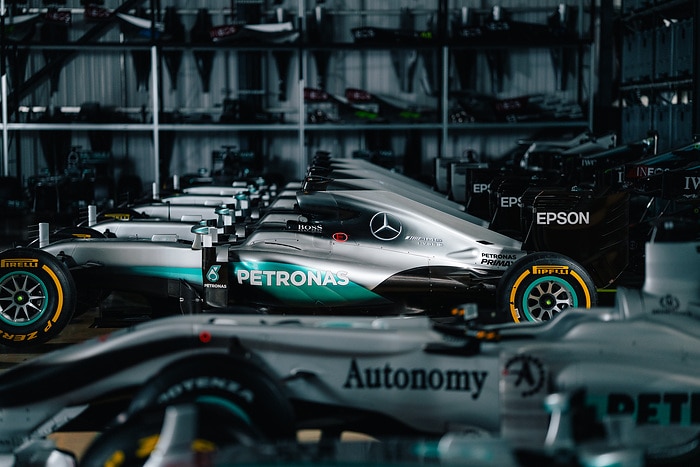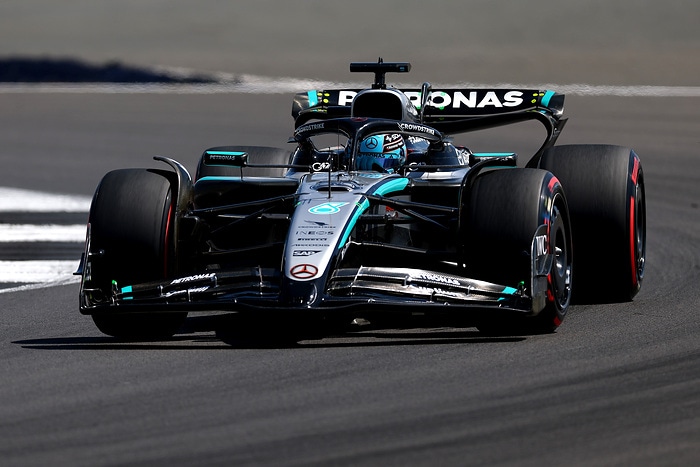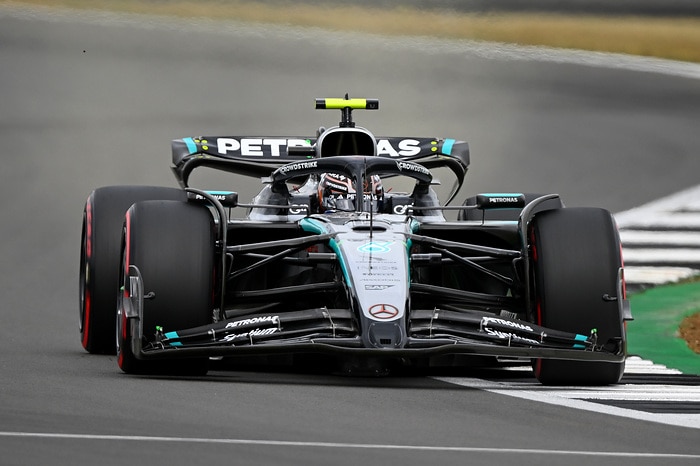Rahal team’s performance typifies uncertainties heading into opener

By
Jeff Olson
| Published:
Mar 11, 2018
ST. PETERSBURG, Florida – Two adjectives best describe the relationship between one team and the new universal aero kit. Tricky and tough.
Rahal Letterman Lanigan Racing is, like every other team in the Verizon IndyCar Series, trying to sort out the latest generation of equipment. It worked – and didn’t work – during Saturday’s qualifying, as Takuma Sato qualified fifth for today’s season-opening Firestone Grand Prix of St. Petersburg, while Graham Rahal qualified 24th and last.
“It’s just been kind of tricky for us,” Rahal said. “So having said that, I don’t know exactly where we are competitively. I know that we’re definitely not there, if you know what I mean. To be up front, we’re going to have to find quite a bit.”
Sato, who joined the team after a season that included an Indianapolis 500 victory with Andretti Autosport, had better luck with the new equipment than his teammate. He’ll start on the third row in the 110-lap race (ABC, 12:30 p.m. ET; Advance Auto Parts INDYCAR Radio Network, noon), the second-fastest Honda behind pole winner Robert Wickens.
Still, the changes are dramatic.
“To me, they’re tough to drive, and that’s what we probably expected,” said Sato, driving the No. 30 Mi-Jack/Panasonic Honda. “We love it usually more challenging, but we’re just finding difficulty to find a good speed. We’re on the way.”
The new body kit, which is fitted to the existing Dallara IR-12 chassis, has presented numerous challenges to drivers and engineers since they began testing it in October. The most significant change is a reduction in downforce. Where previous versions of the car were stuck to the track, the new car slides.
 The bulk of the offseason testing took place at Sebring International Raceway, where the grip level is higher than the St. Petersburg street course. Even painted markings on the airport runway portion of the circuit have created issues this weekend.
The bulk of the offseason testing took place at Sebring International Raceway, where the grip level is higher than the St. Petersburg street course. Even painted markings on the airport runway portion of the circuit have created issues this weekend.
“Obviously we kind of worked the car probably a little bit too much and tuned it a little bit too much to what suited some of the testing tracks versus what was going to suit here,” said Rahal, driver of the No. 15 United Rentals Honda. “Even though the tire was the same – it was what we used at Sebring – the grip level there is obviously higher (at Sebring) and it completely fooled us, I would say. We’re just going to have to rethink it a little bit. It’s going to take some time.”
Rahal Letterman Lanigan Racing wasn’t the only team struggling to find a balance with the car and finding mixed results. Team Penske’s Josef Newgarden didn’t make it out of the first qualifying round and will start 13th today, while teammate Will Power will start next to Wickens on the front row. Similarly, AJ Foyt Racing rookie Matheus “Matt” Leist qualified third, while veteran teammate Tony Kanaan will start 10th.
In the final practice this morning, though, Kanaan had the second-fastest lap of the 24-car field, while Newgarden had the fifth-best time. The unpredictable situation is the same for everyone, Sato said.
“We just realized how much downforce was important last year, and now we have to work quite hard (with less downforce),” Sato said. “But I think everybody is in the same boat and same game, and I think Graham and I are finding bits and pieces of the positive side.”
Since practice began Friday, drivers have noted the differences between this year’s car and previous versions. The best illustration of the change, they say, comes in Turns 11 and 12, a high-speed chicane that used to be navigated at full throttle. Not anymore.
“You never really thought about it; it was always flat (on the accelerator),” Rahal said. “And it is really, really, really, really tricky if you are going to be flat at all. … Obviously the tire is pretty similar to last year, but last year’s car had a lot more downforce, so it’s a fairly hard tire for this car, and it’s a little bit tricky how to get it to work. Some guys have figured it out. We just haven’t quite yet, but with Takuma, I think we’ll be able to overcome that pretty quickly.”
As tricky and tough as the new kit is, Rahal Letterman Lanigan’s duo likes the potential.
“Overall, I think we love it,” Sato said. “We love how the car looks and obviously the reduction in downforce impacted heavily how we drive and how you treat the tires and the setup.”
ABC’s live coverage of the race begins at 12:30 p.m. ET. Live audio coverage is provided by the Advance Auto Parts INDYCAR Radio Network, starting at noon.
FIRESTONE GRAND PRIX OF ST. PETERSBURG:
Race 1 of 17 on the 2018 Verizon IndyCar Series schedule
Track: 1.8-mile, 14-turn temporary street course comprised of city streets and a runway of Albert Whitted Airport
Race length: 110 laps/198 miles
Fuel: Each car receives 70 gallons of Sunoco E85 ethanol
Push-to-pass: Each car has 150 seconds total duration for the race, with a single maximum use of 15 seconds. Push-to-pass adds approximately 60 horsepower when utilized.
TV: ABC, 12:30 p.m. ET
Radio: Advance Auto Parts INDYCAR Radio Network, noon (including network affiliates, Sirius 214, XM 209, IndyCarRadio.com, IndyCar.com and INDYCAR Mobile app)
Source: https://www.indycar.com






















